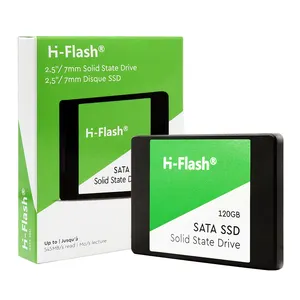
K-Ricard High Quality Solid State Drive Hard Disk Drive SSD 120GB 128GB 240GB 256GB 480GB 512G 960GB 1TB 2TB 4TB





















The realm of data storage has been revolutionized by the advent of solid state drives (SSDs). These storage devices, known for their robust performance and durability, have become a staple for data management needs. A solid state drive GB refers to the storage capacity of the SSD, which is measured in gigabytes (GB). The capacity of an SSD can greatly influence its utility and suitability for various tasks.
SSDs come in various forms, each designed to cater to specific applications. Internal SSDs are commonly used to upgrade desktop or laptop performance, offering faster boot times and data access. Conversely, external solid state drives provide portable storage solutions, ideal for users who require mobility without sacrificing speed. The application of SSDs spans across personal computing, gaming, and professional environments where quick data retrieval is crucial.
The construction of SSDs involves no moving parts, which stands in contrast to traditional hard disk drives (HDDs). This attribute not only contributes to the durability of solid state drives but also to their reduced noise and heat generation. The primary materials used in SSDs include NAND-based flash memory, which is responsible for the storage, and a controller that manages the data stored on the memory.
The advantages of using a solid state drive GB are manifold. SSDs offer faster data access speeds, lower power consumption, and greater resistance to physical shock compared to their HDD counterparts. These benefits make SSDs particularly appealing for users who prioritize efficiency and reliability in their storage devices.
When selecting a solid state drive GB, it is essential to consider the storage capacity and the form factor. Capacities can range from smaller drives suitable for operating system installation to larger drives designed for extensive data storage. The form factor, whether it be 2.5-inch for laptops or m.2 for modern desktops, should align with the user's hardware compatibility.
In conclusion, the solid state drive GB is a pivotal component for anyone looking to enhance their digital storage capabilities. With a variety of types, features, and capacities available, users can find an SSD that aligns with their specific needs. It is recommended to assess the intended use, required speed, and necessary durability when making a selection.